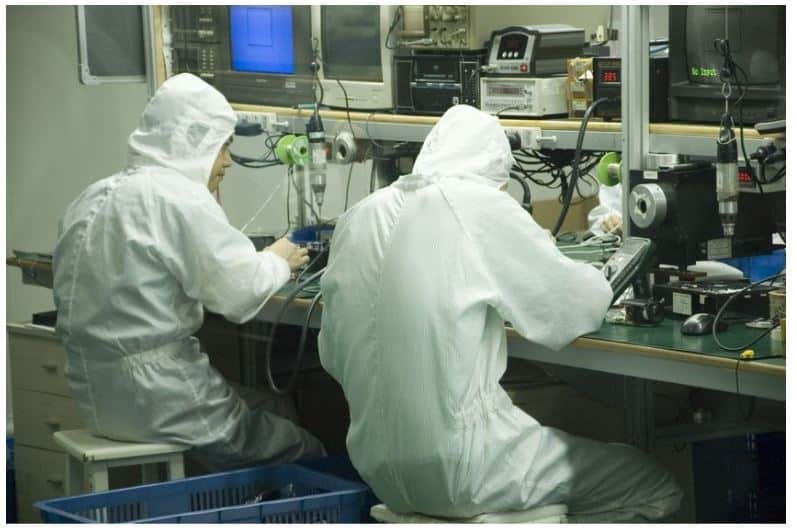
In my previous article, I discussed how companies should be evaluating their contract manufacturer (CM). The key takeaway was to compile as much information as you could about the supplier before you move on. This first step, evaluating your supplier, will set the tone for how you proceed with the following three steps.
In this blog post, I’ll be going over some key steps you should be doing along the way to help you avoid fatal mistakes when it comes to evaluating your Contract Manufacturer.
Request for Quote (RFQ)
When sending out the RFQ package, please include your Bill of Materials (BOM), CAD files, 2D drawings, Gerber Files, schematics, prototypes, minimum order quantity (MOQ), and any part or product specifications.
Some companies suggest sending a company intro but this should be done during the evaluation stage. During the previous step, the CM will request info about your company as well, such as funding, marketing info, strategy, team, and more.
The most exciting part of the RFQ package is not sending all of the files but seeing the feedback from your CM. You might be receiving some design/engineering request changes to optimize tooling, price, quality, etc and you should take this into account.
But what you should be most excited about is the costing. For some commoditized parts, you can receive a quote for everything (including part + assembly costs together) but usually, if you are manufacturing a more complex product, you will receive your quote in stages.
- Full BOM Quote: Each item on the BOM should have a quote associated with it. If you have 500 unique parts, then you will have 500 part quotes. For example, if a part is stamped, the BOM quote should include material, fabrication (stamped), coating/finishing, handing, and scrap/QC costs.
- Tooling: Each customized item that needs tooling should have a tooling price paired with it as well. Your CM should also provide you with tooling info, such as cavity count, time life, tool material, and more.
- Final Assembly Quote: This will usually come after your CM receives or makes a prototype. They might be able to estimate this but having a prototype is the best way to confirm this.
- Quality Control Quote: Depending on the complexity of your product, you might need a functional test after the product is assembled. QC at this step is different than the first step of scrap/QC because this is for the overall product, rather than the QC of each item.
- Packaging & Cartons: This should not be its own item but for some reason, people forget about packaging. Also, depending on your sales strategy, your product will need to go to retailers, warehouses, direct to consumers, etc… Each strategy will have different carton specifications. These costs will also vary to make sure your CM understands this so they can quote it accordingly.
After you receive these quotes, feel free to negotiate. This is why it’s important to receive a full BOM quote so you can easily target items you feel are too expensive.
Sampling
Once you have accepted quotes from a few different CM’s, proceed with sampling. Please also note that it’s not uncommon for CM’s to make a sample then alter their prices. These prices can be altered because of process changes (maybe their method didn’t work well), material changes, and numerous other factors.
When you receive the sample, ensure the quality is accepted and make sure you understand the quotes. This is the stage where you look at the prototype and understand the cost to make this in mass production.
Factory Visit
You have most likely narrowed down your search to a few CM’s by now. You should now get on the plane or get in your car to visit these CM’s. When visiting them, pay attention to the following:
- Their working conditions – Is their shop floor and offices nice and clean. Do the operators have the appropriate safety equipment?
- Ask for IQC (incoming quality control) reports for parts waiting to be inspected.
- Team – Do they make time for you and are they willing to show you around and walk you through the steps.
One of the purposes of this step is to verify the answers you have received during the evaluation stage. After all your visits, you have enough information to choose which CM will work best for you.
Conclusion
Taking these three steps will help you avoid mistakes that will ruin your manufacturing effort and turn your contract manufacturing journey into a nightmare. First evaluate your supplier and filter which one works best for you based on the quotes, samples, and how they present themselves during the factory visit.
OpenBOM improves the process of how you work with your CM, contractors, colleagues, and other team members. We provide you with the capabilities to seamlessly manage your parts, vendors, bill of materials, purchase orders, and change orders. All BOM, engineering, and manufacturing information are stored in the cloud which you can share with anyone.
Register for FREE to create your OpenBOM account and reach out to us via support @ openbom dot com if you have any questions.
Regards,
Jared Haw
Join our newsletter to receive a weekly portion of news, articles, and tips about OpenBOM and our community.









